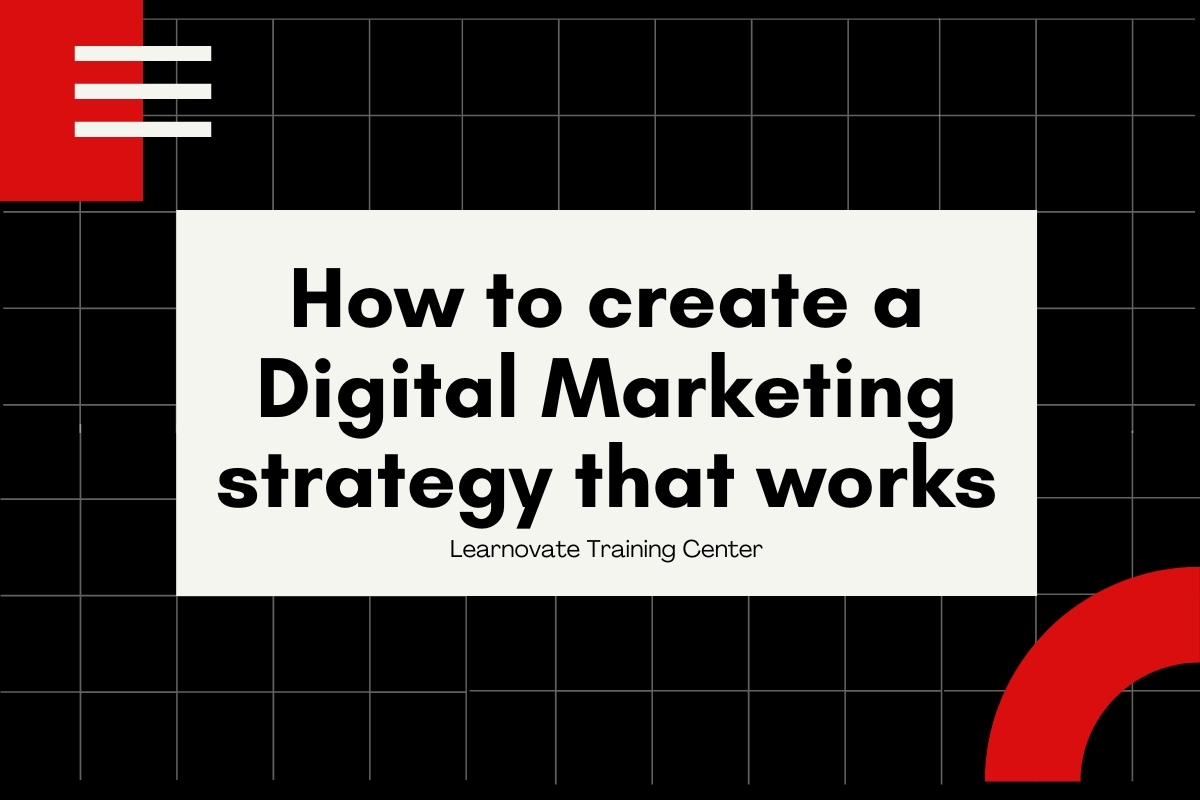81% of buyers glean information from the internet before buying. For decision-makers, this statistic brought to light by GE Capital Retail Bank should be a wake-up call. It is impossible to hope to prosper in the 21st century by ignoring a solid digital marketing strategy.
In the digital age, having an agile organization and investing in the web are essential elements for survival. Only, for most people, these technical expressions are meaningless.
To successfully complete your digital transformation, apply the steps described in the following lines to the letter. But first of all, it is important to go back in more detail to the concept of the digital strategy itself.
What is the digital strategy?
A digital strategy is a set of techniques whose purpose is to enable you to achieve your objectives through the World Wide Web.
Increasing internet traffic, obtaining qualified leads, and retaining customers are some examples of aspirations that a good digital strategy manager can help you achieve. To do this, he will rely on tools such as website creation, inbound marketing, social networks, etc.
Be careful though… Although digital strategy can take many forms, without a pre-established plan, all your attempts will be doomed to failure. This is why digital transformation cannot take place without respecting the following steps.
How to develop a truly effective digital marketing strategy?
No matter which digital strategy manager you ask, each time, he will tell you that the digital marketing transition goes through 5 specific stages. From market analysis to performance measurement, certain levels cannot decently be skipped.
1) Conduct market research
Without a real perception of your market, your digital strategy is unlikely to bear fruit. How do you expect to fare well if you have no idea of the rules that govern the said universe? Even the virtual world does not escape this implacable logic.
What size industry are you targeting? What market shares do you currently have? What are the main trends in your industry? Etc.
An effective agile organization relies on a solid knowledge of its environment. To go further, complete this study with a SWOT analysis. Acronym for Strengths, Weaknesses, Opportunities, and Threats, the term SWOT has long entered the lexical field of digital strategy managers.
2) Create a persona
At the center of all your business activities, there must be a customer. Not just any. The one who is most likely to buy your product (or service) because they share your values and really need it.
In inbound marketing, as in all other aspects of digital transformation, the creation of the persona is a point that should not be trifled with.
Use market research and a bit of psychology to create the identity card of your ideal client. Gender, age, level of education, digital habits, and needs are some of the information that should be included.
For example, in the context of the digital transition of a vintage fashion store, the persona could read: “Marilyn, 28 years old. Parisian by birth and by passion. Holder of a BTS in business communication, Marilyn is a fashionista who assumes herself. An 80s style lover, she spends 3 hours a week researching outfits on Instagram and Pinterest. Every other Saturday, she hunts in the flea markets of the 75th arrondissement.
The goal is to put a face to the audience you plan to speak to.
3) Set SMART goals
Without a specific destination, your digital transition will have no effect or will negatively tarnish your reputation. First of all, take the time to precisely define the area in which you want to see progress.
Traffic, leads, visibility, customer experience. .. At the end of the swot analysis, you will be able to identify the points on which to focus your attention in priority.
Thereafter, define Specific, Measurable, Achievable, Realistic, and Time-bound (SMART) goals. Examples of SMART goals include:
- have 10,000 Facebook page followers by September 2021;
- obtain 250 qualified leads by June 2021;
- achieve a conversion rate of 12% before October 2021;
- etc
4) Create the content of the digital strategy
Once the previous steps are complete, it’s time to focus on the heart of your digital strategy: content. What message do you intend to convey to your audience? Through which channels do you plan to do this? And more importantly how often?
If your digital transformation revolves around inbound marketing, you will need to create white papers, blog posts, YouTube videos, etc. If, on the other hand, it is focused on setting up an e-commerce site, you will need to hire programmers or webmasters.
In the digital marketing certification syllabus, particular emphasis is placed on this phase of digital transformation. Remember that on the internet, content is king. Better not to make mistakes.
5) Track the progress of your digital transformation
After months of intense work, your digital transition is now operational. However, you are far from finished. Without diligent measurement of KPIs, you will never know whether or not it is truly effective.
On a regular basis, report on certain performance indicators such as:
- the traffic on your website;
- the conversion rate;
- positioning in search engine results;
- the number of unique visitors;
- session time;
- etc
How to succeed in your digital transformation for sure?
Even for marketing professionals, the digital transition is a subject not to be taken lightly. Based on extremely simple principles, it can very quickly become a bag of knots.
In order to avoid finding yourself in such a situation, the easiest way is still to follow certification in digital marketing course Dubai. Developed by experts with years of experience under their belts, this course will shed light on many levels.
Brand content, community management, social media, mobile… All aspects of e-marketing are covered. In addition, you will be introduced to all the tools capable of helping you in this process of the digital transition.
Enroll now at Learnovate Training Center for this digital marketing course in Dubai and take your business to the next level.













